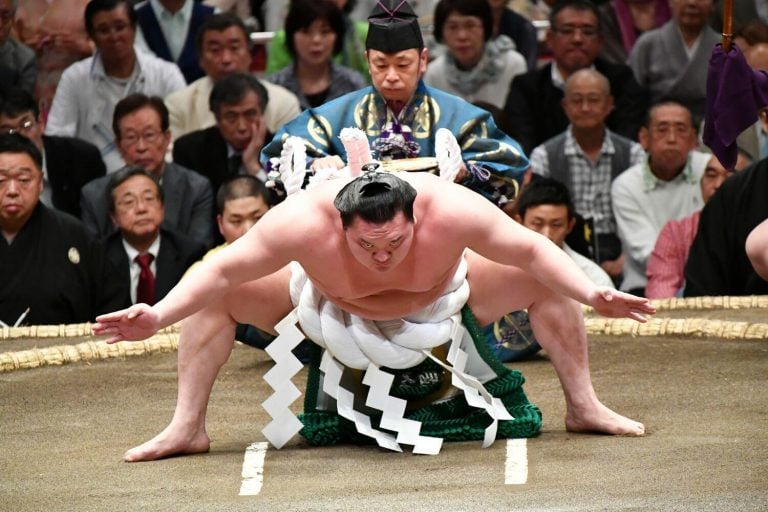
Sumo is the national sport of Japan and is a ritual is worthy of admiration and respect. However, attending a sumo tournament is not only expensive, but it can also be difficult because the main tournaments only take place three times a year. What you can see without any problem at any time is a sumo training. Attending sumo training is free at many gyms in Tokyo and for this reason it is usually one of the main tourist attractions for those who want to have a first contact with this sport. In some of these places you can book, and in others, you just have to show up during training hours. In those sumo trainings you will also be able to see live the role of the oyakata, one of the most respected figures in the world of sumo (and who are always retired wrestlers).
Where to watch sumo training in Tokyo
The gyms where sumo wrestlers in Japan prepare for championships are called heya in Japanese. It is here that Japanese sumo is practiced throughout the year, since even outside the championship season the wrestlers follow a strict training program so as not to lose strength or flexibility. Most and the best heyas to watch sumo training in Tokyo are in the Ryogoku neighborhood. In many of those heyas you can see the training for free, but not in all of them, since there are some that do not accept visitors.
Takasago beya
This is one of the most visited places by tourists to see a free sumo training. The Takasago heya is one of the oldest in Tokyo city, and the sumo wrestlers live and train all year round. In fact, great sumo champions have come out of this training center, such as the great Konishiki Yosokichi, famous throughout Japan.
You can find it within walking distance of Ryogoku Sumo Hall, the main building of sumo culture in the capital. This sumo stable is much more modest than the main building, but as soon as you walk through its doors you will be transported to an atmosphere of solemnity that will have a great impact on you. The training sessions usually start very early in the morning, but if you want know the exact time, it is recommended to call the day before or some time in advance.
Oshima beya (former Tomozuna beya)
Although it is not a well-known heya among tourists, in this small gym you are welcomed with open arms. The wrestlers at Tomozuna beya love to have foreign visitors, and you will certainly enjoy the experience sitting very close to them. In order to attend, it is recommended that you send them an email indicating the day of your visit, so they indicate the time when you must be there. They do not have training every day, so it is good to know in advance. When the day comes, be punctual and very polite. Do not miss any detail of every movement, because you do not always have the opportunity to sit so close to sumo wrestlers. At the end of the training there are some fighters who come to take photos or even talk to visitors.
Arashio beya
For many tourists this is the best heya in Tokyo. The training sessions can be seen directly from the street through large windows. If you do not want to sit for more than 3 hours without being able to leave, this is one of the best places to watch a sumo training for as long as you want and leave when you feel like it. It has a web page in English where you can follow all the training schedules to organize your visits.
Although it is not necessary to reserve a place before going in the morning, if you want to make sure of any last-minute changes, you can also call their phone number for visits. They only attend in Japanese, but they are so nice that on their website they have the transcript of the basic conversation you can have with them to find out if there will be training the next day.
Musashigawa beya
Opened in 2013, it is one of the most recent heyas. It was founded by sumo champion Musashigawa Mitsuhide, and it allows free visits during training sessions during the training season. The only condition to be able to attend this center is that there is a Japanese speaker among the tourists. In order to book, the Japanese speaking member can call the number indicated on their website, only available in Japanese.
Rules for watching sumo training
Attending a training in a heya is a privilege that not all tourists can enjoy. Keep in mind that during training you are a visitor, and the sumo wrestlers are not putting on a show for you, so you will have to show respect for them and follow some basic rules that are common in all training centers.
Be punctual, respect the entry and exit times, keep quiet, do not eat or smoke, do not take flash photos, and, above all, be grateful for the opportunity they are giving you. Like any type of event, in sumo you have to follow an etiquette that you have to know and respect at all times.
Visiting a heya to watch sumo training in Tokyo is one of the country’s biggest draws, yet it is not usually a popular tourist activity. We highly recommend it, because seeing first-hand one of the most fascinating and ceremonious sports in the world is a unique experience.




















